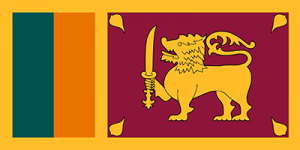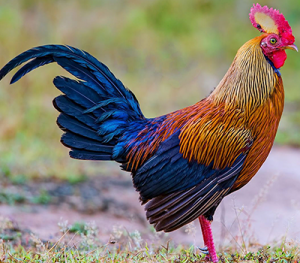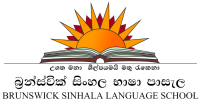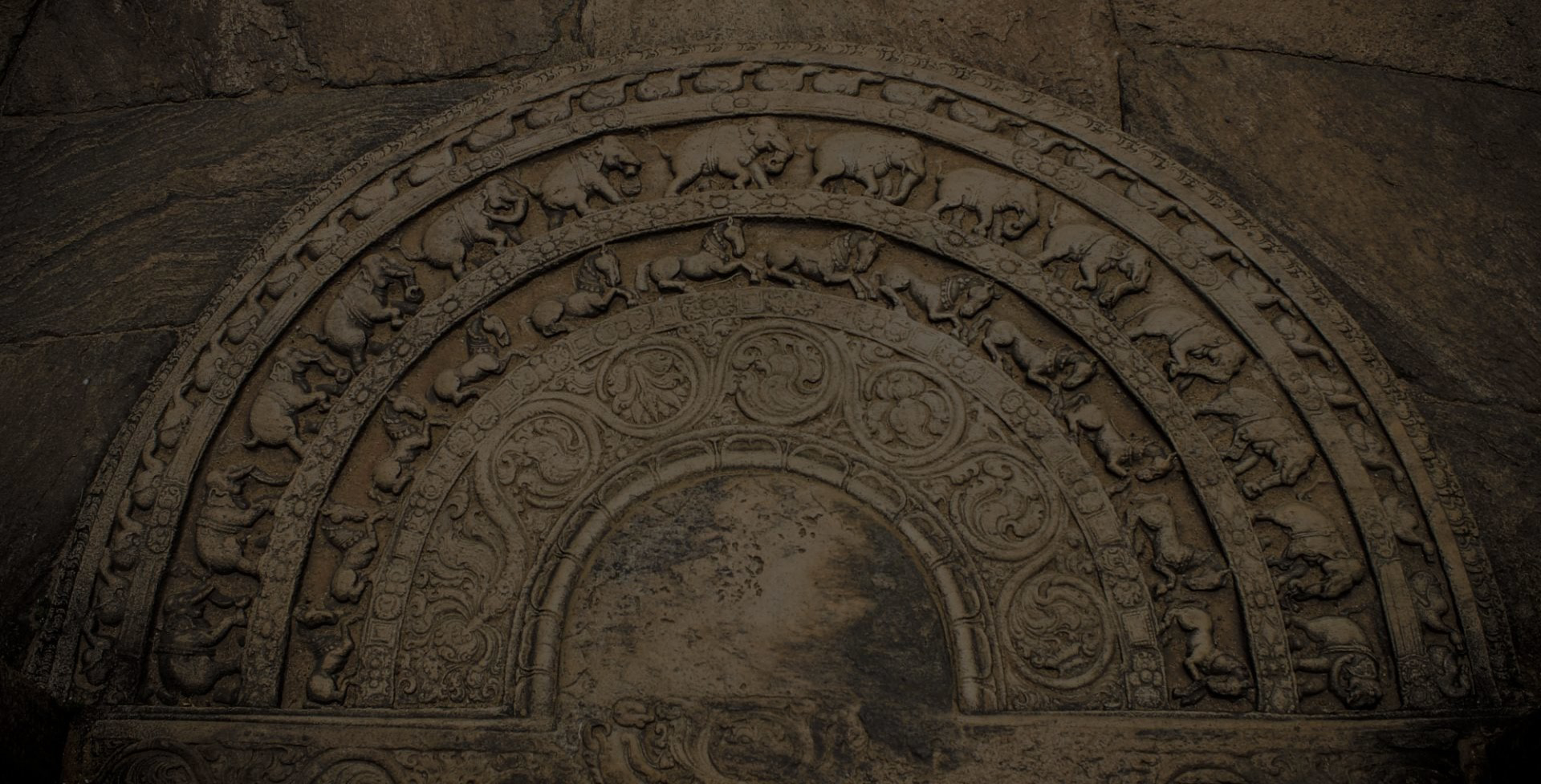Dignity of Sri Lanka
Known as the pearl of Indian Ocean Sri Lanka or formerly called as Ceylon is an island country in South Asia which has total area of 65,610 km2 (25,330 sq. mi).
Due to geographic location of Sri Lanka made it a major trading hub since ancient Anuradhapura period – Silk Road and till now modern Maritime Silk Road. With the attraction to the country by its trades from many nation created diverse population and especially with India, Sri Lanka engaging with culturally that made high influence in country by many aspects.
According to evidence of prehistoric human settlements dating back at least 125,000 years and documented history of 3,000 years, Sri Lanka have a rich cultural heritage with stunning archaeological wonders. As history says country was under controlled by the Portuguese, the Dutch and the British whereas only the British took control over the whole island from 1815 to 1948.
Sri Lanka divide into 9 provinces and subdivided into 25 districts while Sri Jayewardenepura Kotte is being the capital city and Colombo being commercial city and largest city of country. Sri Lanka is a member of the Commonwealth and the South Asian Association for Regional Cooperation.
best places to visit in sri lanka

Endless beaches, fabulous architectural insights, welcoming people, oodles of wild life and flavorful food with colorful cultural influences make Sri Lanka irresistible country for travelling, which is why Sri Lanka became main attraction destination of tourists.
Deshabimani Songs
Meaningful lyrics dedicate to Sri Lanka beautifully composed into songs, we call them as Deshabimani Songs. Especially during Independence Day these songs will be performed Sri Lankan artists, and of course they include in education system to bring the love for our country among students.
ලලිත කලා ඔප කරනා සීගිරි ළඳුනේ
ඇයි ඔබ තනිවී සෝ දුකෙනි ඉන්නේ//
රතැඟිලි මොලවා කුසුම් නෙලා ගෙන
බුදු පුදටද යන්නේ..
බලන්නකෝ අනෙ අප දෙස ළඳුනේ
පිහිදී සිනහ පපා..
ලලිත කලා ඔප කරනා සීගිරි ළඳුනේ
ඇයි ඔබ තනිවී සෝ දුකෙනි ඉන්නේ
මියුරු බසින් අප නලවා සුරඟන රැඟුමක්
සොඳුරේ රඟපා සනසනු අප සැනිනා..
දෙපා නඟන්නට බෑ නොවෙ අය්යෝ
ඔබ තනිකර දමලා
ඔය වැනි සුන්දර සුරූපියන් ඇයි
ගල්ගෙයි තැවේ දුකින්..
ලලිත කලා ඔප කරනා සීගිරි ළඳුනේ
ඇයි ඔබ තනිවී සෝ දුකෙනි ඉන්නේ..
ගායනය : චිත්රා සෝමපාල මහත්මිය
පොළොවෙන් මතුවන මිණිකැට
මනරම් දිවයින මගෙ රට
ගැතියන් නොව පිට රටකට
බැතියෙන් සුරකිමු සදහට //
ගිරි සිරසින් සැදී ඇදී - කළු මහවැලි කැළණි නදී
දසත ගලා දෙරණ සලා - හෙළබිම සරු කරන ලදී
සීගිරියේ බිතු සිතුවම් - ඉසුරුමුණියේ ගල් කැටයම්
සිරි ඉතිරේ අනුරපුරේ - යුගයක හෙළ විරු විකුමන්
පොළොවෙන් මතුවන මිණිකැට...
වැවෙන් ජලය කෙතට හලා - ගලෙන් විකුම් පිළිම නෙලා
පොළොන්නරුවෙ හෙළ විරුවන් - රුවන් දෙරණ සසිරි කළා
අසිරිය දැක මගෙ රටේ - පිට රටිනගේ අවි ගැටේ
එකමුතු වෙමු නිති සුරකිමු - උරුමය අප දිනු රටේ
පොළොවෙන් මතුවන මිණිකැට//
සංගීතය : රෝහණ වීරසිංහ මහතා
ගායනය : හර්ෂණ දිසානායක
හෙළ ජාතික අභිමානේ
වැදු විරුවන් සේ පොරණේ
දිනු මවුබිම සවුසිරියෙන් සරසවු
පිබිදෙවු පිබිදෙවු සැරසෙවු
වීර විකුම් පෑ පෙර දරුවෝ
දෙස රැස මුරකෙරුවෝ
ඒ ලෙය ඇති ඔබ සුර විරුවෝ
නොම වවු ණය කරුවෝ
දැය දිනුමට පැද යන නැවියා
ගොවියා බිම දෙවියා
විපතෙහි සැපතෙහි
නොසැළෙයි නොතැවෙයි
අටලෝ දම හුරු හෙළයා
මුහුදට ඈදෙන මහ ගංගා - කුඹුරට යළි හරවා
ධාණ්ය වගාකොට සිරිලක මේ
පෙරදිග කෙත කරවා
අරපිරිමැස්මට පුරුදුවෙලා - බිඳලවු දුක සංකා
පැරකුම් යුගයක් නැවත්ත අරඹවු
නිජ භූමි තලේ ලංකා
පද රචනය : කරුණාරත්න අබේසේකර මහතා
ගායනය : සී. ටී. ප්රනාන්දු මහතා
සසර වසන තුරු
නිවන් දකින තුරු
පින් කෙත හෙළ රන් දෙරණේ
යළි උපදින්නට
හේතු වාසනා වේවා
හේතු වාසනා
රත්නමාලි සෑ කිරණයි මහ බෝ සෙවණයි
තිසා වැවයි සීගිරියයි මගේ උරුමයයි
සසර වසන තුරු
නිවන් දකින තුරු
පින් කෙත හෙළ රන් දෙරණේ
යළි උපදින්නට
හේතු වාසනා වේවා
හේතු වාසනා
පද රචනය : ඩෝල්ටන් අල්විස් මහතා
සංගීතය : නන්දා මාලිනී මහත්මිය
ගායනය : පණ්ඩිත් ඩබ්. ඩී. අමරදේව
National anthem
History Of Buddhism In Sri Lanka
As being one of the major religions of the world; Buddhism which was born in India and it has been prominent in East and Southeast Asia since history, especially in Sri Lanka official religion of Sri Lanka had been Theravada Buddhism. Throughout the role played by Sri Lankan kings of history, the island became the traditionally oldest religious Buddhist country where Buddhist culture is protected and preserved.
- National anthem
"Sri Lanka Matha"
The national anthem of Sri Lanka composed by Ananda Samarakoon in 1940. Firstly, it was written in Sinhalese and translated to Tamil.
- National flag:

Flag of Sri Lanka
The national flag of Sri Lanka consists of a lion holding a sword in its right fore paw by representing the Sinhalese people and first king. Dark red/maroon background represents Buddhist symbol. Four golden-yellow Bo leaves, one in each corner represent Four Sublime States. Around the background is a yellow border that represents Buddhist monk's community. On the left side, two vertical stripes in green and saffron represent Moors and Tamil communities. The current flag was adopted in 1950.
- National emblem

The national emblem of Sri Lanka
Used by Sri Lankan government is in connection with the administrative purpose and government of the country. The emblem has a lion, holding a sword in its right fore paw on a maroon background encircled with petals of a blue lotus. Also it features a bunch of paddy, grain vase (punkalasa), dhammachakka, sun and moon.
- National language
Sinhalese and Tamil
The mother tongue of the Sinhalese is Sinhala—an Indo-Aryan language—the Tamils speak the Dravidian language of Tamil.
- National flower

Blue water lily (Nymphaea nouchali))
The water lily is found in all parts of the island and grows mainly in shallow water. The flower is considered a symbol of truth, purity and discipline. It has connections with Buddha and was used as ceremonial flower in Sri Lanka throughout history.
- National tree

Ceylon ironwood or naa (Mesua ferrea)
It was chosen as the national tree due to its endemism in Sri Lanka, utility, historic & cultural importance, exterior posture, wide distribution, color and nature and ability to draw and sketch easily.Theravada Buddhism considers this tree for achieved enlightenment. The tree has been utilized for various purposes since ancient times.
- National bird

Sri Lankan junglefowl (Gallus lafayetii)
The colorful bird is endemic to Sri Lanka and commonly found in national parks, jungle and dense scrub. It is an endemic bird of Sri Lanka.
- National sport

Volleyball
The sport was introduced in 1916 to Sri Lanka. However, there is an opinion that Sri Lankans played a similar sport before its introduction. Elle had recognition as a national sport before volleyball.
The island consists mostly of flat to rolling coastal plains, with mountains rising only in the south-central part. The highest point is Pidurutalagala, reaching 2,524 metres (8,281 ft) above sea level.
Sri Lanka has 103 rivers. The longest of these is the Mahaweli River, extending 335 kilometres (208 mi). These waterways give rise to 51 natural waterfalls of 10 metres (33 ft) or more. The highest is Bambarakanda Falls, with a height of 263 metres (863 ft).
Elsewhere in the island often covered with rocky buttes and mounds, some of which reach elevations of more than 1,000 ft. The plain is fringed by a coast consisting mostly of sandy beaches, spits, and lagoons.
The climate is tropical and warm, due to moderating effects of ocean winds. Mean temperatures range from 17 °C (62.6 °F) in the central highlands, where frost may occur for several days in the winter, to a maximum of 33 °C (91.4 °F) in other low-altitude areas. Average yearly temperatures range from 28 °C (82.4 °F) to nearly 31 °C (87.8 °F). Day and night temperatures may vary by 14 °C (25.2 °F) to 18 °C (32.4 °F).
Sri Lanka is one of 25 biodiversity hotspots in the world and the highest biodiversity density in Asia. A remarkably high proportion of the species among its plants and animals, 27% of the 3,210 flowering plants and 22% of the mammals, are endemic. Sri Lanka has declared 24 wildlife reserves, which are home to a wide range of native species such as elephants, leopards, sloth bears, the unique small loris, a variety of deer, and the purple-faced langur.
There are three main ethnic groups in Sri Lanka, those are Sinhalese, Tamil, and Muslim. Buddhism is the largest and is considered as an "Official religion" of Sri Lanka whereas both Sri Lankan and Indian Tamils are believed in Hindu, as the Muslims adherents of Islam. Christianity draws its followers (about 7 percent of the population) from among the Sinhalese, Tamil, and Burgher communities.
As history of Sri Lanka says Arahant Mahinda in the third century BC preached the Dhamma to King Devanampiyatissa whom was the ruler of the country, in Mihintale. It said that The Thero had been sent by the Indian Emperor Ashoka for a mission with the purpose of spreading Buddhism over countries. The king was brought into the Buddhist fold, and he invited Great Arahant and his followers to the city and settled in a royal pavilion in the city park of Mahamegha. Following the royal family; common people also preached the Buddhism. The king Devanampiyatissa donated the Mahamegha Park to the sangha while the monastery of Mahavihara was established, and it became the prime center of Buddhism in Sri Lanka. Later Therī Sanghamitta arrived Sri Lanka with a branch of the Bo tree at Bodh Gaya which Lord Buddha had attained enlightenment. The sapling was ceremonially planted in the Anuradhapura city, now we call it as Sri Maha Bodhi. Over the years Buddhism became an established religion in Sri Lanka.
In Sri Lanka mainly two religious festivals in Buddhism has been celebrating and those are namly Vesak Festival and Poson Festival.
Sri Lanka is a democratic republic and a unitary state which is governed by a semi-presidential system, with a mixture of a presidential system and a parliamentary system. Sri Lanka is the oldest democracy in Asia. Most provisions of the constitution can be amended by a two-thirds majority in parliament which consists of more than 200 members.
Current Government of Sri Lanka has been ruling by (2020) the unitary semi-presidential constitutional republic. President of Sri Lanka is Mr. Gotabaya Rajapaksa while Prime Minister is Mr. Mahinda Rajapaksa.
Sri Lanka is providing production and export of tea, rubber, coffee, sugar, and other commodities. With the increment of industrialization food processing, textiles, telecommunications, and finance become important too. The country's main economic sectors are tourism, tea export, clothing, rice production, and other agricultural products.
Government sponsored and provide medicines, health services by free in government sector extensive network of hospitals and dispensaries. Several special campaigns in preventive health care, and a program of family planning, those all based on Western medical technology.
The government controls the main educational system and offers free education from primary schools through university levels and in certain professional and technical fields. The country has a relatively well-developed system of primary and secondary education with high rates of student enrollment in most parts of the country.
As Sri Lanka has a great cultural diversity due to various religions. People follow their own colorful rituals that become most readily visible features of the cultural landscape. Varying degrees of colonial impact, modernizing influences, and wealth and income add other shades to the cultural mosaic.
Rice with curries is the main food in Sri Lankan life style. Besides that dishes like pittu, kiribath, roti, string hoppers, wattalapam, kottu, and appam is very popular in Sri Lanka.
In April, Sri Lankans celebrate the Buddhist and Hindu new year festivals whereas Esala Perahera which is a symbolic Buddhist festival consisting of dances and decorated elephants held in Kandy in July and August. Christians celebrate Christmas on December while Tamils celebrate Thai Pongal and Maha Shivaratri, and Muslims celebrate Hajj and Ramadan.
references
- https://en.wikipedia.org/wiki/
National_symbols_of_Sri_Lanka
- https://en.wikipedia.org/wiki/
Sri_Lanka - https://www.britannica.com/
place/Sri-Lanka - https://www.youtube.com/watch?v=5U4fFdZLl5E
- https://www.youtube.com/watch?v=buns7DpTL_I
- https://www.youtube.com/watch?v=GZVc-kZOZcE
- http://www.e-thaksalawa.moe.gov.lk/web/si/entertainment/songs/deshabimana-songs.html
Dignity of Sri Lanka
Known as the pearl of Indian Ocean Sri Lanka or formerly called as Ceylon is an island country in South Asia which has total area of 65,610 km2 (25,330 sq. mi).
Due to geographic location of Sri Lanka made it a major trading hub since ancient Anuradhapura period – Silk Road and till now modern Maritime Silk Road. With the attraction to the country by its trades from many nation created diverse population and especially with India, Sri Lanka engaging with culturally that made high influence in country by many aspects.
According to evidence of prehistoric human settlements dating back at least 125,000 years and documented history of 3,000 years, Sri Lanka have a rich cultural heritage with stunning archaeological wonders. As history says country was under controlled by the Portuguese, the Dutch and the British whereas only the British took control over the whole island from 1815 to 1948.
Sri Lanka divide into 9 provinces and subdivided into 25 districts while Sri Jayewardenepura Kotte is being the capital city and Colombo being commercial city and largest city of country. Sri Lanka is a member of the Commonwealth and the South Asian Association for Regional Cooperation.
best places to visit in sri lanka

Endless beaches, fabulous architectural insights, welcoming people, oodles of wild life and flavorful food with colorful cultural influences make Sri Lanka irresistible country for travelling, which is why Sri Lanka became main attraction destination of tourists.
Deshabimani Songs
Meaningful lyrics dedicate to Sri Lanka beautifully composed into songs, we call them as Deshabimani Songs. Especially during Independence Day these songs will be performed Sri Lankan artists, and of course they include in education system to bring the love for our country among students.
ලලිත කලා ඔප කරනා සීගිරි ළඳුනේ
ඇයි ඔබ තනිවී සෝ දුකෙනි ඉන්නේ//
රතැඟිලි මොලවා කුසුම් නෙලා ගෙන
බුදු පුදටද යන්නේ..
බලන්නකෝ අනෙ අප දෙස ළඳුනේ
පිහිදී සිනහ පපා..
ලලිත කලා ඔප කරනා සීගිරි ළඳුනේ
ඇයි ඔබ තනිවී සෝ දුකෙනි ඉන්නේ
මියුරු බසින් අප නලවා සුරඟන රැඟුමක්
සොඳුරේ රඟපා සනසනු අප සැනිනා..
දෙපා නඟන්නට බෑ නොවෙ අය්යෝ
ඔබ තනිකර දමලා
ඔය වැනි සුන්දර සුරූපියන් ඇයි
ගල්ගෙයි තැවේ දුකින්..
ලලිත කලා ඔප කරනා සීගිරි ළඳුනේ
ඇයි ඔබ තනිවී සෝ දුකෙනි ඉන්නේ..
ගායනය : චිත්රා සෝමපාල මහත්මිය
පොළොවෙන් මතුවන මිණිකැට
මනරම් දිවයින මගෙ රට
ගැතියන් නොව පිට රටකට
බැතියෙන් සුරකිමු සදහට //
ගිරි සිරසින් සැදී ඇදී - කළු මහවැලි කැළණි නදී
දසත ගලා දෙරණ සලා - හෙළබිම සරු කරන ලදී
සීගිරියේ බිතු සිතුවම් - ඉසුරුමුණියේ ගල් කැටයම්
සිරි ඉතිරේ අනුරපුරේ - යුගයක හෙළ විරු විකුමන්
පොළොවෙන් මතුවන මිණිකැට...
වැවෙන් ජලය කෙතට හලා - ගලෙන් විකුම් පිළිම නෙලා
පොළොන්නරුවෙ හෙළ විරුවන් - රුවන් දෙරණ සසිරි කළා
අසිරිය දැක මගෙ රටේ - පිට රටිනගේ අවි ගැටේ
එකමුතු වෙමු නිති සුරකිමු - උරුමය අප දිනු රටේ
පොළොවෙන් මතුවන මිණිකැට//
සංගීතය : රෝහණ වීරසිංහ මහතා
ගායනය : හර්ෂණ දිසානායක
හෙළ ජාතික අභිමානේ
වැදු විරුවන් සේ පොරණේ
දිනු මවුබිම සවුසිරියෙන් සරසවු
පිබිදෙවු පිබිදෙවු සැරසෙවු
වීර විකුම් පෑ පෙර දරුවෝ
දෙස රැස මුරකෙරුවෝ
ඒ ලෙය ඇති ඔබ සුර විරුවෝ
නොම වවු ණය කරුවෝ
දැය දිනුමට පැද යන නැවියා
ගොවියා බිම දෙවියා
විපතෙහි සැපතෙහි
නොසැළෙයි නොතැවෙයි
අටලෝ දම හුරු හෙළයා
මුහුදට ඈදෙන මහ ගංගා - කුඹුරට යළි හරවා
ධාණ්ය වගාකොට සිරිලක මේ
පෙරදිග කෙත කරවා
අරපිරිමැස්මට පුරුදුවෙලා - බිඳලවු දුක සංකා
පැරකුම් යුගයක් නැවත්ත අරඹවු
නිජ භූමි තලේ ලංකා
පද රචනය : කරුණාරත්න අබේසේකර මහතා
ගායනය : සී. ටී. ප්රනාන්දු මහතා
සසර වසන තුරු
නිවන් දකින තුරු
පින් කෙත හෙළ රන් දෙරණේ
යළි උපදින්නට
හේතු වාසනා වේවා
හේතු වාසනා
රත්නමාලි සෑ කිරණයි මහ බෝ සෙවණයි
තිසා වැවයි සීගිරියයි මගේ උරුමයයි
සසර වසන තුරු
නිවන් දකින තුරු
පින් කෙත හෙළ රන් දෙරණේ
යළි උපදින්නට
හේතු වාසනා වේවා
හේතු වාසනා
පද රචනය : ඩෝල්ටන් අල්විස් මහතා
සංගීතය : නන්දා මාලිනී මහත්මිය
ගායනය : පණ්ඩිත් ඩබ්. ඩී. අමරදේව
National anthem
“Sri Lanka Matha” is the national anthem of Sri Lanka composed by Ananda Samarakoon. First sung as Ceylon’s official national anthem at the Independence Day ceremony in 1952. Later Tamil version of the national anthem was composed.
History of Buddhism in Sri Lanka
As being one of the major religions of the world; Buddhism which was born in India and it has been prominent in East and Southeast Asia since history, especially in Sri Lanka official religion of Sri Lanka had been Theravada Buddhism. Throughout the role played by Sri Lankan kings of history, the island became the traditionally oldest religious Buddhist country where Buddhist culture is protected and preserved.
- National anthem
"Sri Lanka Matha"
The national anthem of Sri Lanka composed by Ananda Samarakoon in 1940. Firstly, it was written in Sinhalese and translated to Tamil.
- National flag:

Flag of Sri Lanka
The national flag of Sri Lanka consists of a lion holding a sword in its right fore paw by representing the Sinhalese people and first king. Dark red/maroon background represents Buddhist symbol. Four golden-yellow Bo leaves, one in each corner represent Four Sublime States. Around the background is a yellow border that represents Buddhist monk's community. On the left side, two vertical stripes in green and saffron represent Moors and Tamil communities. The current flag was adopted in 1950.
- National emblem

The national emblem of Sri Lanka
Used by Sri Lankan government is in connection with the administrative purpose and government of the country. The emblem has a lion, holding a sword in its right fore paw on a maroon background encircled with petals of a blue lotus. Also it features a bunch of paddy, grain vase (punkalasa), dhammachakka, sun and moon.
- National language
Sinhalese and Tamil
The mother tongue of the Sinhalese is Sinhala—an Indo-Aryan language—the Tamils speak the Dravidian language of Tamil.
- National flower

Blue water lily (Nymphaea nouchali))
The water lily is found in all parts of the island and grows mainly in shallow water. The flower is considered a symbol of truth, purity and discipline. It has connections with Buddha and was used as ceremonial flower in Sri Lanka throughout history.
- National tree

Ceylon ironwood or naa (Mesua ferrea)
It was chosen as the national tree due to its endemism in Sri Lanka, utility, historic & cultural importance, exterior posture, wide distribution, color and nature and ability to draw and sketch easily.Theravada Buddhism considers this tree for achieved enlightenment. The tree has been utilized for various purposes since ancient times.
- National bird

Sri Lankan junglefowl (Gallus lafayetii)
The colorful bird is endemic to Sri Lanka and commonly found in national parks, jungle and dense scrub. It is an endemic bird of Sri Lanka.
- National sport

Volleyball
The sport was introduced in 1916 to Sri Lanka. However, there is an opinion that Sri Lankans played a similar sport before its introduction. Elle had recognition as a national sport before volleyball.
The island consists mostly of flat to rolling coastal plains, with mountains rising only in the south-central part. The highest point is Pidurutalagala, reaching 2,524 metres (8,281 ft) above sea level.
Sri Lanka has 103 rivers. The longest of these is the Mahaweli River, extending 335 kilometres (208 mi). These waterways give rise to 51 natural waterfalls of 10 metres (33 ft) or more. The highest is Bambarakanda Falls, with a height of 263 metres (863 ft).
Elsewhere in the island often covered with rocky buttes and mounds, some of which reach elevations of more than 1,000 ft. The plain is fringed by a coast consisting mostly of sandy beaches, spits, and lagoons.
The climate is tropical and warm, due to moderating effects of ocean winds. Mean temperatures range from 17 °C (62.6 °F) in the central highlands, where frost may occur for several days in the winter, to a maximum of 33 °C (91.4 °F) in other low-altitude areas. Average yearly temperatures range from 28 °C (82.4 °F) to nearly 31 °C (87.8 °F). Day and night temperatures may vary by 14 °C (25.2 °F) to 18 °C (32.4 °F).
Sri Lanka is one of 25 biodiversity hotspots in the world and the highest biodiversity density in Asia. A remarkably high proportion of the species among its plants and animals, 27% of the 3,210 flowering plants and 22% of the mammals, are endemic. Sri Lanka has declared 24 wildlife reserves, which are home to a wide range of native species such as elephants, leopards, sloth bears, the unique small loris, a variety of deer, and the purple-faced langur.
There are three main ethnic groups in Sri Lanka, those are Sinhalese, Tamil, and Muslim. Buddhism is the largest and is considered as an "Official religion" of Sri Lanka whereas both Sri Lankan and Indian Tamils are believed in Hindu, as the Muslims adherents of Islam. Christianity draws its followers (about 7 percent of the population) from among the Sinhalese, Tamil, and Burgher communities.
As history of Sri Lanka says Arahant Mahinda in the third century BC preached the Dhamma to King Devanampiyatissa whom was the ruler of the country, in Mihintale. It said that The Thero had been sent by the Indian Emperor Ashoka for a mission with the purpose of spreading Buddhism over countries. The king was brought into the Buddhist fold, and he invited Great Arahant and his followers to the city and settled in a royal pavilion in the city park of Mahamegha. Following the royal family; common people also preached the Buddhism. The king Devanampiyatissa donated the Mahamegha Park to the sangha while the monastery of Mahavihara was established, and it became the prime center of Buddhism in Sri Lanka. Later Therī Sanghamitta arrived Sri Lanka with a branch of the Bo tree at Bodh Gaya which Lord Buddha had attained enlightenment. The sapling was ceremonially planted in the Anuradhapura city, now we call it as Sri Maha Bodhi. Over the years Buddhism became an established religion in Sri Lanka.
In Sri Lanka mainly two religious festivals in Buddhism has been celebrating and those are namly Vesak Festival and Poson Festival.
Sri Lanka is a democratic republic and a unitary state which is governed by a semi-presidential system, with a mixture of a presidential system and a parliamentary system. Sri Lanka is the oldest democracy in Asia. Most provisions of the constitution can be amended by a two-thirds majority in parliament which consists of more than 200 members.
Current Government of Sri Lanka has been ruling by (2020) the unitary semi-presidential constitutional republic. President of Sri Lanka is Mr. Gotabaya Rajapaksa while Prime Minister is Mr. Mahinda Rajapaksa.
Sri Lanka is providing production and export of tea, rubber, coffee, sugar, and other commodities. With the increment of industrialization food processing, textiles, telecommunications, and finance become important too. The country's main economic sectors are tourism, tea export, clothing, rice production, and other agricultural products.
Government sponsored and provide medicines, health services by free in government sector extensive network of hospitals and dispensaries. Several special campaigns in preventive health care, and a program of family planning, those all based on Western medical technology.
The government controls the main educational system and offers free education from primary schools through university levels and in certain professional and technical fields. The country has a relatively well-developed system of primary and secondary education with high rates of student enrollment in most parts of the country.
As Sri Lanka has a great cultural diversity due to various religions. People follow their own colorful rituals that become most readily visible features of the cultural landscape. Varying degrees of colonial impact, modernizing influences, and wealth and income add other shades to the cultural mosaic.
Rice with curries is the main food in Sri Lankan life style. Besides that dishes like pittu, kiribath, roti, string hoppers, wattalapam, kottu, and appam is very popular in Sri Lanka.
In April, Sri Lankans celebrate the Buddhist and Hindu new year festivals whereas Esala Perahera which is a symbolic Buddhist festival consisting of dances and decorated elephants held in Kandy in July and August. Christians celebrate Christmas on December while Tamils celebrate Thai Pongal and Maha Shivaratri, and Muslims celebrate Hajj and Ramadan.
References
- https://en.wikipedia.org/wiki/
National_symbols_of_Sri_Lanka
- https://en.wikipedia.org/wiki/
Sri_Lanka - https://www.britannica.com/
place/Sri-Lanka - https://www.youtube.com/watch?v=5U4fFdZLl5E
- https://www.youtube.com/watch?v=buns7DpTL_I
- https://www.youtube.com/watch?v=GZVc-kZOZcE
- http://www.e-thaksalawa.moe.gov.lk/web/si/entertainment/songs/deshabimana-songs.html

